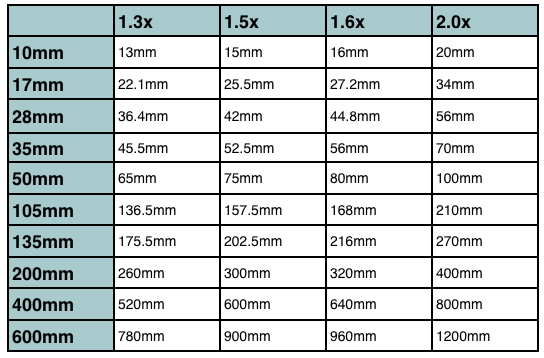MARK1992 is correct. The focal length of a lens is a physical characteristic of that lens. It's the same, regardless of which camera you mount it on, or if you don't mount it at all. A 50mm lens will still be a 50mm lens, when it's lying in solitude on a table.
However, by tradition we have defined a certain focal length to go with a certain film size as "normal", in that it gives about the same field of view as the eye, or about 45° diagonal field of view.
A Hasselblad 500C (film size 60*60mm) was normally delivered with an 80mm lens as a normal one, a Canon F-1 (film size 24*36mm) with a 50mm and the Canon Dial (18*24mm film size) with a 28mm lens. All adapted to give what's considered a normal perspective, if you look at the prints from these negatives at a convenient distance.
The confusion came in when cameras, and their lenses, which were originally designed for 24*36mm fílm format, were instead equipped with digital sensors with sizes less than the film format. In Canon's case, the APS-C format is 15*22mm. Since this crops out a piece of the image in the middle, you get less field of view, in spite of using the same 50mm lens, compared to what you get with film, or a "full format" (in this case as full as the film format for a corresponding camera body) sensor.
But the 50mm lens is still a 50mm lens. There is no difference at all between taking a photo with an APS-C camera with a 50mm lens, and taking the same picture with a full format camera, if you then enlarge the picture form the APS-C camera to 10*15cm, and enlarge the other picture so that you can cut out a center piece, also 10*15cm, which covers the same area as the APS-C camera saw.
That would give you two printouts that are identical (apart from possible differences in camera sensor quality, but that's something else). Still, nobody would expect that your 50mm lens suddenly changes itself just because you put a pair of scissors in a printout, do you?
So there is no specific coverage with a 50mm lens, nor with any other lens. It's all a question about how large part of the projected image circle behind the lens you care to register. So field of view with a certain lens depends upon the sensor size, nothing else.
But of course, if you can't change the sensor size (some cameras do allow masking of parts of it, to make a crop camera out of a 24*36mm camera, for example), then the only other way of changing the field of view is to change the focal lenght. But this doesn't change the field of view directly either - it changes the magnification. With a shorter focal length, you get less magnification. If the lens wasn't properly compensated, you'd end up with the same picture as with your 50mm, just smaller, and with black borders. But to make any sense, the lens is designed in such a way that it compensates for the lower magnification and still projects a full image circle behind itself. The result is an image where everything is smaller, but due to that, you also get more of the view in front of you crammed into the picture. Thus a larger field of view.
A telephoto lens is the opposite, of course.
Summary: A lens is a lens is a lens. There is no change of the focal length, ever, until you start zooming a zoom lens. A prime will remain a 50mm (or whatever) as long as it lasts, regardless of which camera you put it on. But different film/sensor formats record more or less of the image it projects. If you then magnify the recorded images to the same printout size it will appear as if you used a different focal length. But you didn't.
You get the same effect if you just magnify the image more, then cut away the borders.




